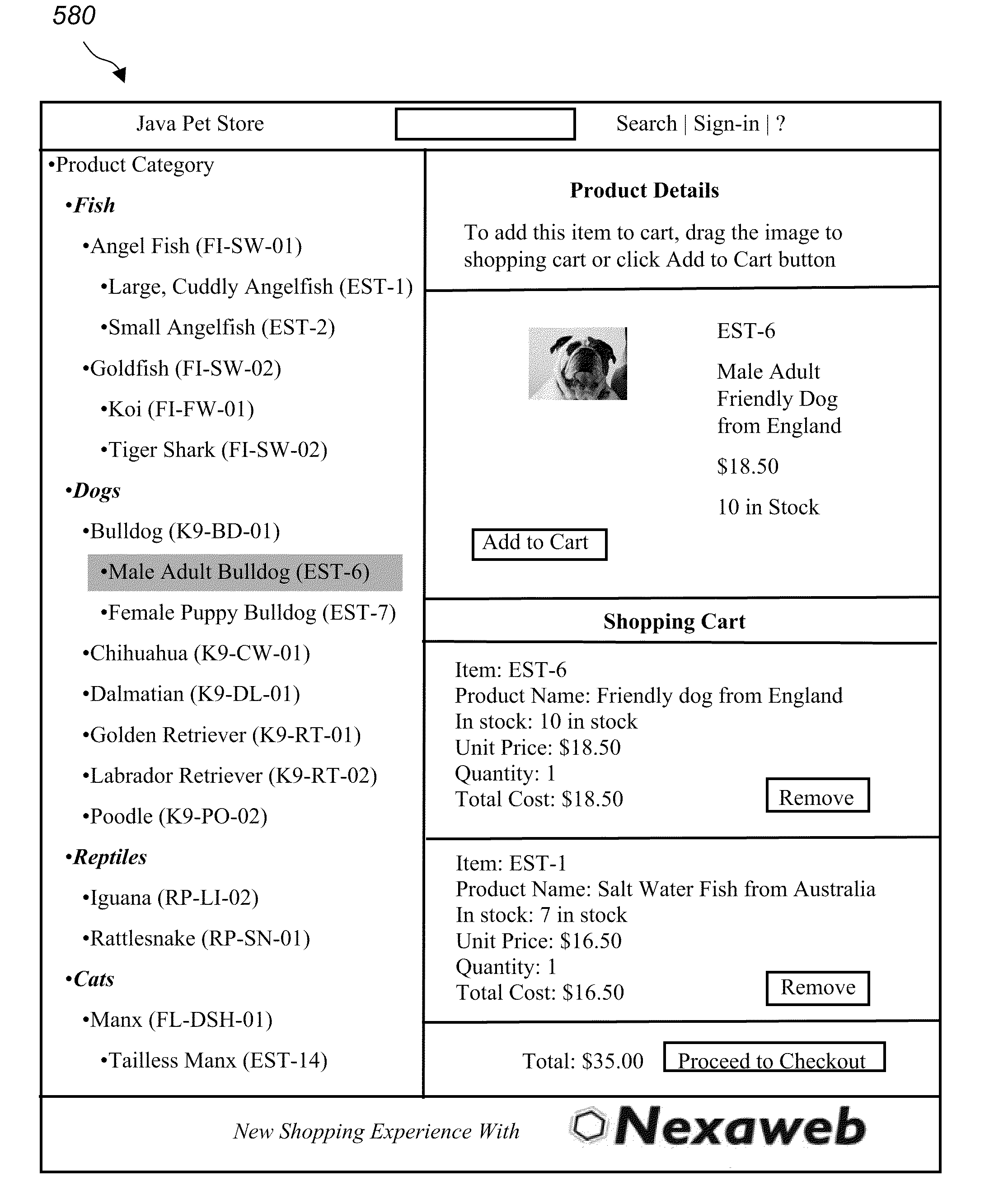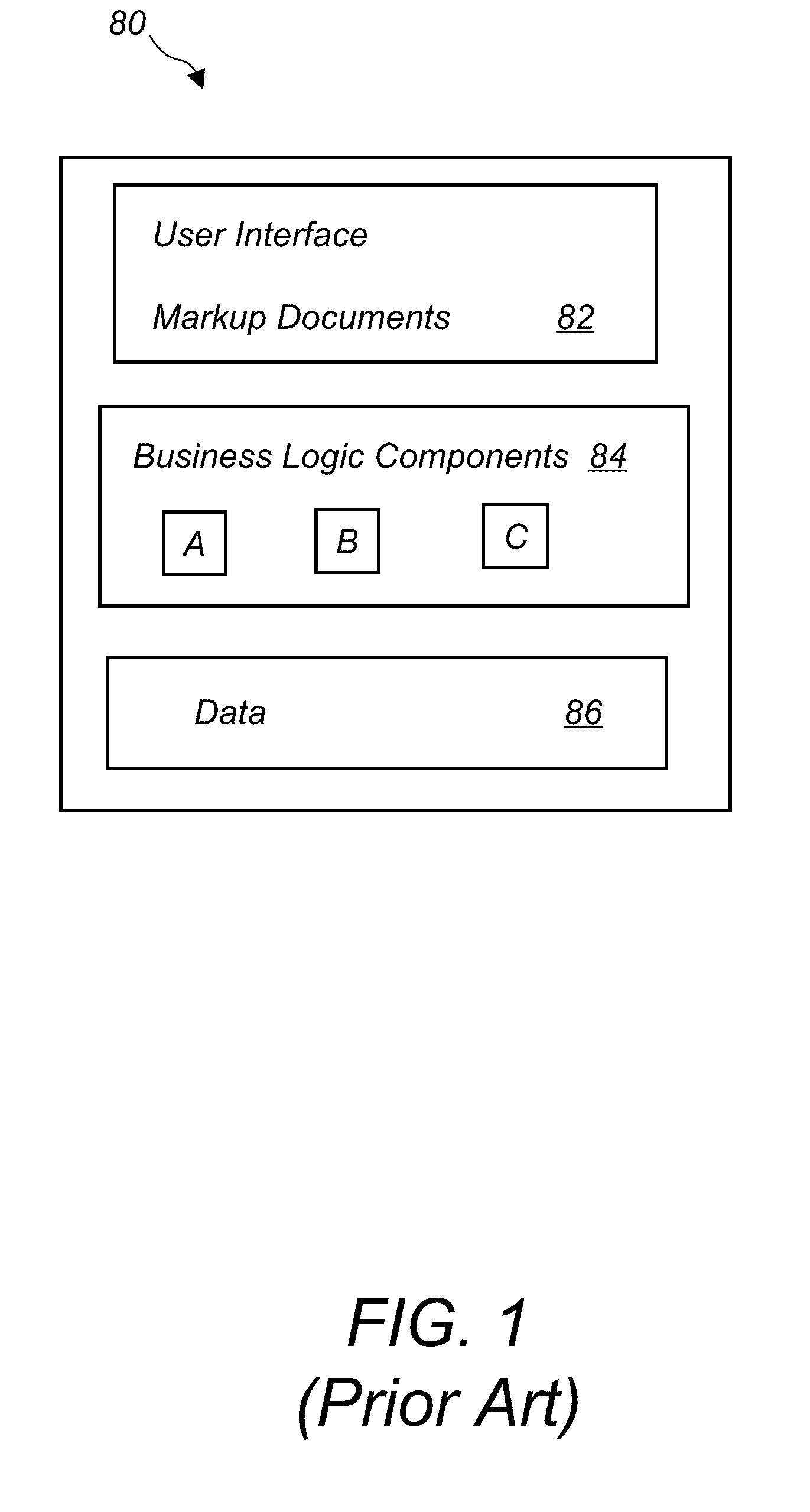System and method for developing and deploying computer applications over a network
a computer application and network technology, applied in software deployment, program control, instruments, etc., can solve the problems of poor interactivity with users, time-consuming and inflexible deployment mode, and windows-based applications cannot run within a web browser, so as to reduce the impact of infrastructure, reduce maintenance costs, and reduce bandwidth costs
- Summary
- Abstract
- Description
- Claims
- Application Information
AI Technical Summary
Benefits of technology
Problems solved by technology
Method used
Image
Examples
code example
[0132]One example will illustrate better the difference. One key application component in the Pet Store application is the shopping cart update. For the HTML based application, when a user adds a new item or removes an item from the cart, the whole cart content is sent back to the client from the server for updating. The following code snippets illustrate the original Pet Store Shopping Cart presentation logic.
Item ID Product Name In Stock Unit Price Quantity Total Cost ”> alse=“no” / > attribute=“itemid” / >” type=“text” size=“4” value=“”>
[0133]We notice that every time there is an item update (add or remove), the entire shopping cart is rebuilt (loop through tag) and all rows in the table are sent back to the client's browser. The client's browser does not cache the cart content, but it refreshes and redisplays the entire shopping cart.
[0134]The Nexaweb-enabled client performs the same function with a different approach. The following is a correspondin...
PUM
 Login to View More
Login to View More Abstract
Description
Claims
Application Information
 Login to View More
Login to View More - R&D
- Intellectual Property
- Life Sciences
- Materials
- Tech Scout
- Unparalleled Data Quality
- Higher Quality Content
- 60% Fewer Hallucinations
Browse by: Latest US Patents, China's latest patents, Technical Efficacy Thesaurus, Application Domain, Technology Topic, Popular Technical Reports.
© 2025 PatSnap. All rights reserved.Legal|Privacy policy|Modern Slavery Act Transparency Statement|Sitemap|About US| Contact US: help@patsnap.com



